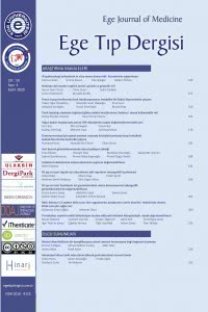The effect of febrile infectious diseases on lipid profile in childhood: The correlations between pro-inflammatory cytokines and serum lipids
Sitokinler, Apolipoproteinler, Lipidler, İnterlökin-1, Çocuk, Bulaşıcı hastalıklar, Tümör nekroz faktör
Cytokines, Apolipoproteins, Lipids, Interleukin-1, Child, Communicable Diseases, Tumor Necrosis Factor,
- ISSN: 1017-7698
- Yayın Aralığı: Yılda 3 Sayı
- Başlangıç: 2018
- Yayıncı: Ege Üniv. Tıp Fak.
Daily living activities of elderly people in Küçükçekmece region, İstanbul
Ragıp ORTAÇ, Safiye AKTAŞ, Şebnem FAYTONCU, Füsun ATLIHAN
Cardiac involvement of hydatid disease: A case report
Tahir YAĞDI, Tanzer ÇALKAVUR, Çağatay ENGİN, Önol BİLKAY
Rectal rupture caused by compressed air: A case report
Hüseyin KARALİ, İ. Hamit HANCI, Ekin Ö. AKTAŞ, Süheyla ERTÜRK, Mustafa KORKUT
Ferda ÖZKINAY, İpek ÖZUNAN, Cumhur GÜNDÜZ, Hilmi AKIN, Cihangir ÖZKINAY, Ferrin MEHDİZADE, Osman YALMAN, Ayşe YENİGÜN
MEHMET YALAZ, Necil KÜTÜKÇÜLER, Aytül PARLAR, Güzide AKSU, A. Ruhi ÖZYÜREK
Response to recombinant Hepatitis B vaccine in children receiving anticancer chemotherapy
Nesrin UMUTLU, Füsun ATLIHAN, Pamir GÜLEZ
The number and location of the nutient foramina of the fibulae
